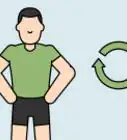This article was co-authored by Julian Arana, M.S.eD., NCSF-CPT. Julian Arana is a Personal Trainer and the Founder of B-Fit Training Studios, a personal training and wellness set of studios based in Miami, Florida. Julian has over 12 years of personal training and coaching experience. He is a certified personal trainer (CPT) by the National Council on Strength and Fitness (NCSF). He has a BS in Exercise Physiology from Florida International University and an MS in Exercise Physiology specializing in strength and conditioning from the University of Miami.
There are 18 references cited in this article, which can be found at the bottom of the page.
This article has been viewed 43,849 times.
If you’re interested in strengthening your arms, there are plenty of great exercises to try. For a solid equipment-free workout, try doing 2 sets of 12 to 15 push-ups, plank-ups, tricep dips, and chin-ups. If you have free weights handy, add 2 sets each of biceps curls, chest presses, and shoulder presses to your routine. When developing any exercise plan, always use proper form and allow your muscles to rest between workouts. Results take time but, if you stick to your routine, you’ll be well on your way to achieving your fitness goals!
Steps
Doing Equipment-Free Exercises
-
1Do push-ups to strengthen your triceps, shoulders, and chest.[1] Lie face-down with your palms below your shoulders, elbows flared to the sides, and your toes flexed toward your shins. Breathe out as you push against the floor, extend your elbows, and raise your body. Inhale, slowly lower yourself back down until your chin and torso are just above the floor. Depending on your exercise goals, do a total of 2 sets of 12 to 15 reps for toning with light weights, or 3 to 6 sets of 5 to 8 reps with heavier weights for building muscle.
- As you do push-ups, keep your head in a neutral position, engage (flex) your core muscles, and align your head, neck, and hips.
- For an easier variation, try keeping your knees and shins on the floor as you lift your upper body.[2]
- You can also hold your hands wider than shoulder-distance apart to target your chest muscles. The farther you spread your hands, the more you’ll work your pecs.
-
2Stretch and strengthen your shoulders with arm circles. While standing, hold your arms straight out to each side. Move them forward in small circular motions. Make each circle gradually larger until you've extended your arms to their natural range of motion.[3]
- After making 12 to 15 forward arm circles, switch direction and do 12 to 15 backward arm circles. Be sure not to extend your shoulders past their natural range of motion.
- You can also hold your arms straight in front of you and move them up and down. Keep your elbows straight as you bend your arms up and down at your shoulder joints.
Advertisement -
3Target the backs of your upper arms with triceps dips. For this exercise, you'll need a sturdy chair with armrests. Sit with your feet flat on the floor and grasp the armrest with your elbows bent at 90-degree angles. Breathe out as you slowly straighten your arms and lift yourself out of the chair.[4]
- Hold your body off of the chair for 1 second, then inhale as you slowly lower yourself just above the seat of the chair. Repeat the steps and do 2 sets of 12 to 15 dips.
- You can also do dips on a stair or bench.
-
4Work your arms, abs, and chest with 2 sets of plank-ups. Start in a push-up position, then bend your right elbow to a right angle (90 degrees) so your right forearm is flat against the floor. Do the same with your left arm, and hold this plank position for 2 to 3 seconds. Then place your palms against the floor 1 at a time and lift yourself back into a push-up position.[5]
- Repeat the steps to complete 2 sets of 12 to 15 plank-ups.
- Plank-ups are a great full-body workout. In addition to targeting your arms, they work your chest and core muscles as long as you keep your body rigid during the exercise.
-
5Try doing handstands to work your shoulders and boost your balance. Stand with your back to a wall, then bend forward from your waist. With your hands shoulder-width apart, press against the floor, lift 1 leg off of the ground, and hold your foot against the wall. Carefully hop up with the other foot, and slowly walk your feet up until you've straightened your body.[6]
- Brace your body against the wall to keep your balance. Hold the pose for 10 to 30 seconds, or as long as you can keep your balance, then slowly bring down your legs 1 at a time.
- While in a handstand, you can also try bending your elbows to slowly lower yourself, then straighten your elbows to lift yourself as if you were doing a push-up.[7]
Safety Precaution: Choose a padded, non-slippery surface to do handstands and have a spotter help you keep your balance if you've never done one before. Don't try doing handstand push-ups if you haven't already built up your upper body strength.
Adding Weights and Machines to Your Routine
-
1Perform biceps curls with weights or a resistance band.[8] Stand with your feet shoulder-width apart and hold the weights by your waist. Exhale as you bend your elbows and raise the weights or bar toward your chest and shoulders. Then breathe out as you slowly lower the dumbbells or barbell back toward your waist.[9]
- Keep your back straight, shoulders back, and head and neck aligned as you do biceps curls.
- To do hammer curl variations, hold dumbbells in each hand so your palms face inward toward each other. Hammer curls still work your biceps, but they’re also a great way to strengthen the muscles in your forearms.
Variation: If you don’t have free weights or are just beginning a workout routine, try looping a resistance band around a heavy piece of furniture or under your feet. Pull the band and complete biceps curls as you would with dumbbells or a barbell.[10]
-
2Target your biceps and back with chin-ups. Grasp a pull-up bar with your palms facing you. Breathe out, flex your biceps, and lift yourself off of the floor until your chin's in line with the bar. Then inhale as you straighten your elbows and slowly lower yourself back down. Repeat the steps to complete 2 sets of 12 to 15 reps.[11]
- Chin-ups with your palms facing your body target your biceps. You can also grasp the frame with your hands wider than shoulder-width apart and palms facing away from your body to work your shoulders, chest, and back.
- Keep your core muscles engaged to straighten your back and brace your spine. If you can’t do 12 reps, do as many as you comfortably can and try to add 1 chin-up per week to your sets.
- If you don't have a pull-up bar or resistance machine, you can purchase a multi-grip pull-up bar that fits into door frame. With its various grips, you can easily switch up your hand positions and target multiple muscle groups.
-
3Strengthen your shoulders with standing or seated overhead presses. Sit or stand with your back straight and hold dumbbells or a barbell at chest level with your palms facing forward. Look forward with your head in a neutral position, breathe in, and lift your arms until your elbows are straight, but not locked.[12]
- Breathe out as you lower your arms, then repeat the steps and do 2 sets of 12 to 15 overhead presses, or do 3 to 6 sets of 5 to 8 reps with heavier weights if you want to build muscle.
- Overhead presses primarily target your shoulders. Try switching up your grip and doing overhead presses with your palms facing inward to strengthen different muscles in your forearms.
-
4Sculpt your pecs and biceps with chest presses. Lie face up on a flat bench with your knees bent and feet flat on the floor. Grip a barbell or dumbbells with your palms facing up and your hands slightly wider than shoulder-width apart. Lower the barbell or dumbbells just above your chest, then straighten your elbows and raise the weights straight up, then slowly lower them back to your chest.[13]
- Remember to exhale as you lift the weights. Breathe in as you slowly lower the dumbbells or barbell, then repeat the steps. Do a total of 2 sets of 12 to 15 chest presses, or 3 to 6 sets of 5 to 8 reps with heavier weights if you want to build muscle.
- It’s a good idea to have a helper spot you, especially if you’re not used to doing chest presses. A spotter helps guide the barbell as you complete your reps.
-
5Do barbell triceps extensions to work the backs of your upper arms. Also known as a skull-crusher or nose-breaker, this exercise targets your triceps. Lie on your back on a flat bench and grasp a barbell or dumbbells as you would if you were doing chest presses. Straighten your elbows to raise the weights then, instead of bending your elbows out to sides as with a chest press, lower the weights toward your head. Bring the barbell or dumbbells just above your forehead, then raise them back up to complete a rep.[14]
- Hold your arms so your forearms face your biceps as you raise and lower the weights. Try to keep your upper arms vertical and still throughout the exercise. Make sure all of the motion occurs with your forearm, not your shoulder.
- If you have bone or joint problems or any other medical issues, be sure to ask your doctor before doing triceps extensions or any other weight training exercise.
-
6Build your biceps by doing curls on a resistance machine. The exact instructions vary by machine, so check your manual or consult your gym instructor. For a typical biceps curl resistance machine, sit with your elbows straight and resting on the machine's cushion. Hold the grips with your palms facing up, then pull them toward your chest and shoulders.[15]
- Do 2 sets of 12 to 15 curls, or do 3 to 6 sets of 5 to 8 reps with heavier weights to build muscle. Before you begin, be sure to adjust the seat and weight setting as directed.
- The advantage of resistance machines is that they're more controlled than free weights, which can reduce the risk of injury. To do this and other weight machine exercises, purchase a gym membership or invest in a home resistance machine.
-
7Work your chest and shoulders with weight machine chest presses.[16] Adjust the machine's seat so the grips are in line with your shoulders. Keep your back straight, shoulders down, and as you straighten your elbows, push the grips forward. Slowly bring the handles back to the starting position as you bend your elbows. Do 2 sets of 12 to 15 reps.[17]
- Don't lock your elbows when you straighten them. Remember to adjust the weight before you begin. Specific instructions may vary, so check your manual or ask your gym instructor for tips.
Creating a Safe Exercise Plan
-
1Consult your doctor before starting a strength training routine. If you’re just starting out, ask your doctor for advice about safely becoming more physically active. It’s especially important to consult your doctor if you have a history of bone, joint, heart, or other medical issues.[18]
- You should also check in with your doctor if you’re a preteen or teen, as your bones, muscles, and joints are still growing.[19]
- If you’re working with a certified personal trainer, they can let you know what exercises are safe for you to do after you get clearance from your doctor.
-
2Warm up and cool down by walking or jogging for 10 minutes. Before lifting weights or doing any other type of workout, warm up to get blood flowing to your muscles. Walking, jogging, or doing jumping jacks are all great warm-ups. After working out, walk or jog for another 10 minutes to cool down.[20]
- Increasing blood flow to your muscles before working out helps reduce your risk of injury. Cooling down after a workout eases your body back into a resting state and can help prevent muscle cramps. Make sure to include some stretches in your cool down as well.
-
3Choose weights that you can comfortably lift 12 to 15 times for toning. Your weights should challenge you, but you should still be able to complete 12 to 15 reps while maintaining proper form. If you’re just starting out, try using 5 to 10 pounds (2.3 to 4.5 kg) weights when you do biceps curls, shoulder presses, and other arm workouts.[21]
- Over time, increase your weights steadily and gradually. If you’re in good health are used to being active, you may be able to increase your weights by as much 5 pounds (2.3 kg) every 2 to 3 weeks.
- To build muscle and strength, use heavier weights that you can only lift 8 to 12 times at once and do 3 to 4 sets. If you want bigger muscles, then choose even heavier weights and do 3 to 6 sets of 5 to 8 reps.
- You can also look into more advanced strength training techniques, such as pyramid sets or drop sets. Doing 20 slow reps over 60 seconds is also an effective way to work your muscles.
- If you are doing body weight exercises, then 3 sets of 10 to 15 reps is sufficient. You won’t benefit by doing more reps than this. You will need to add weight to increase your strength training results.
- Always prioritize proper technique, and only add weight if you can complete smooth, steady, and controlled motions.
-
4Make smooth, controlled motions when you perform reps. Proper form is a crucial part of avoiding injury. Never bounce, use jerky movements, or push your body past its natural range of motion. Exhale as you exert your muscles, perform a rep steadily, and inhale as you slowly return to your starting position.[22]
Tip: If you’re just starting out, check with a physical therapist or fitness professional about proper form. If you have a history of medical issues, it’s also a good idea to ask your doctor about which exercises would be beneficial and which you should avoid.
-
5Avoid exercising the same muscle group 2 days in a row. Allow your muscles to rest for at least 24 hours before targeting them in another workout. For instance, if you do an arm workout on Monday, focus on legs on Tuesday.[23]
- If you’re at an intermediate or advanced level, target your arms again on Wednesday. Just make sure that you have not worked your arms the day before chest, shoulder, and back days since your arms contribute to these exercises. Work your arms after doing chest, shoulder, and back strength training rather than before.
- If you’re a beginner, just focus on incorporating 2 days of strength training per week, then add a third day gradually. As for the other days of the week, try to do at least 30 minutes of aerobic exercise, such as jogging or biking.
Expert Q&A
-
QuestionWhat exercise is best for arms?
 Julian Arana, M.S.eD., NCSF-CPTJulian Arana is a Personal Trainer and the Founder of B-Fit Training Studios, a personal training and wellness set of studios based in Miami, Florida. Julian has over 12 years of personal training and coaching experience. He is a certified personal trainer (CPT) by the National Council on Strength and Fitness (NCSF). He has a BS in Exercise Physiology from Florida International University and an MS in Exercise Physiology specializing in strength and conditioning from the University of Miami.
Julian Arana, M.S.eD., NCSF-CPTJulian Arana is a Personal Trainer and the Founder of B-Fit Training Studios, a personal training and wellness set of studios based in Miami, Florida. Julian has over 12 years of personal training and coaching experience. He is a certified personal trainer (CPT) by the National Council on Strength and Fitness (NCSF). He has a BS in Exercise Physiology from Florida International University and an MS in Exercise Physiology specializing in strength and conditioning from the University of Miami.
Certified Personal Trainer It's really important to just exercise your arms from a variety of different angles and with a bunch of different exercises. No single exercise is going to be the "best." That said, you can't go wrong with push ups, pull ups, and rows if you're just looking for a basic arm workout!
It's really important to just exercise your arms from a variety of different angles and with a bunch of different exercises. No single exercise is going to be the "best." That said, you can't go wrong with push ups, pull ups, and rows if you're just looking for a basic arm workout! -
QuestionHow many sets of how many reps required for bicep curls?
 Community AnswerIt depends on your goals. If it's to build muscle, then 4 sets of 5 - 6 curls with the highest weight you can still use proper curl technique with would be good. If you're looking to tone, 5 sets of 10 curls with a lighter weight would be effective.
Community AnswerIt depends on your goals. If it's to build muscle, then 4 sets of 5 - 6 curls with the highest weight you can still use proper curl technique with would be good. If you're looking to tone, 5 sets of 10 curls with a lighter weight would be effective.
Warnings
- Consult your doctor before starting a new exercise plan, especially if you have a history of any medical conditions⧼thumbs_response⧽
- Never try to lift weights or exercise if you’re in pain. Instead, rest your muscles if they’re sore. Talk to your doctor if pain is severe, lasts longer than 5 to 7 days, was accompanied by a popping sound, or prevents you from bearing weight on a joint.⧼thumbs_response⧽
References
- ↑ Julian Arana, M.S.eD., NCSF-CPT. Certified Personal Trainer. Expert Interview. 19 March 2020.
- ↑ https://www.mayoclinic.org/healthy-lifestyle/fitness/multimedia/modified-pushup/vid-20084674
- ↑ https://kidshealth.org/en/parents/elementary-exercises.html
- ↑ https://go4life.nia.nih.gov/exercise/chair-dip/
- ↑ https://www.acefitness.org/education-and-resources/lifestyle/exercise-library/320/plank-ups
- ↑ https://www.nytimes.com/guides/well/activity/how-to-do-a-full-handstand
- ↑ https://www.bodybuilding.com/exercises/handstand-push-ups
- ↑ Julian Arana, M.S.eD., NCSF-CPT. Certified Personal Trainer. Expert Interview. 19 March 2020.
- ↑ https://www.mayoclinic.org/healthy-lifestyle/fitness/multimedia/biceps-curl/vid-20084675
- ↑ https://www.mayoclinic.org/healthy-lifestyle/fitness/multimedia/biceps-curl/vid-20084666
- ↑ https://www.acefitness.org/education-and-resources/lifestyle/exercise-library/190/chin-ups
- ↑ https://go4life.nia.nih.gov/exercise/overhead-arm-raise/
- ↑ https://www.acefitness.org/education-and-resources/lifestyle/exercise-library/5/chest-press
- ↑ https://www.acefitness.org/education-and-resources/lifestyle/exercise-library/36/lying-barbell-triceps-extensions
- ↑ https://www.mayoclinic.org/healthy-lifestyle/fitness/multimedia/biceps-curl/vid-20084690
- ↑ Julian Arana, M.S.eD., NCSF-CPT. Certified Personal Trainer. Expert Interview. 19 March 2020.
- ↑ https://www.mayoclinic.org/healthy-lifestyle/fitness/multimedia/chest-press/vid-20084687
- ↑ https://www.mayoclinic.org/healthy-lifestyle/fitness/in-depth/strength-training/art-20046670
- ↑ https://kidshealth.org/en/teens/strength-training.html
- ↑ https://www.mayoclinic.org/healthy-lifestyle/fitness/in-depth/strength-training/art-20046670
- ↑ https://www.mayoclinic.org/healthy-lifestyle/fitness/in-depth/weight-training/art-20045842
- ↑ https://www.mayoclinic.org/healthy-lifestyle/fitness/in-depth/weight-training/art-20045842
- ↑ https://www.mayoclinic.org/healthy-lifestyle/fitness/in-depth/weight-training/art-20045842
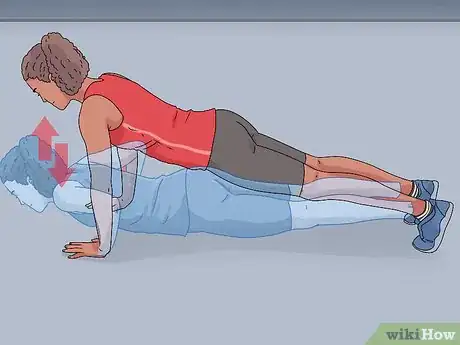

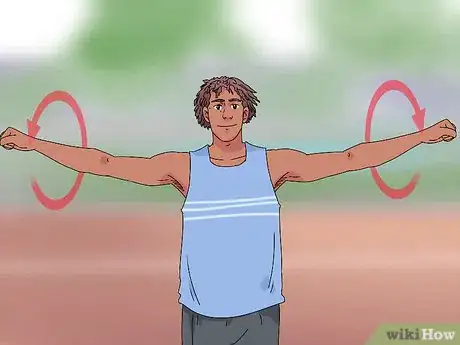
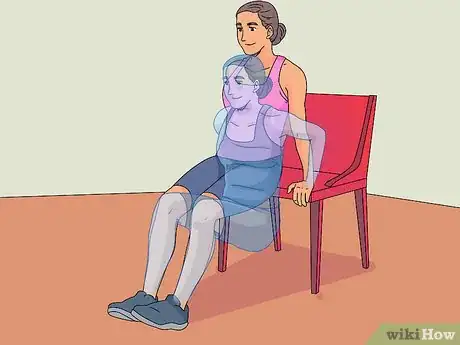
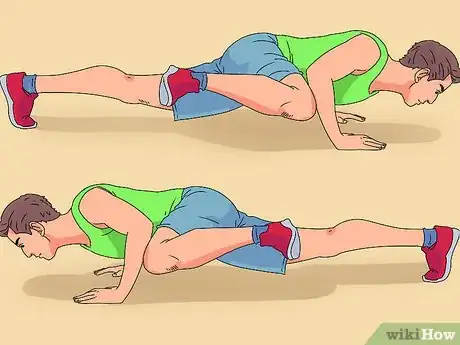
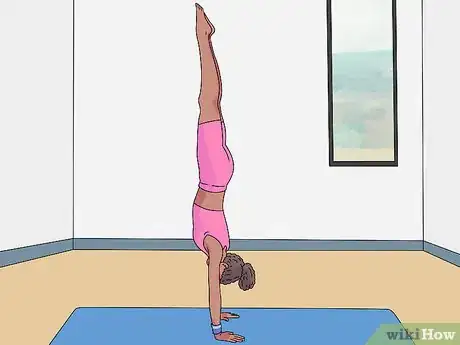
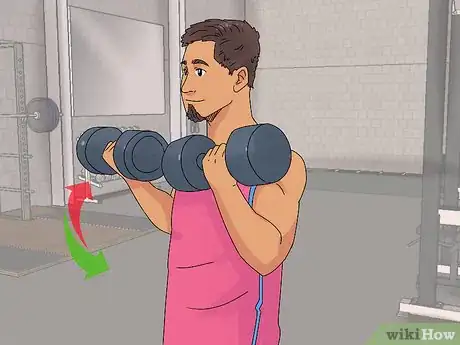
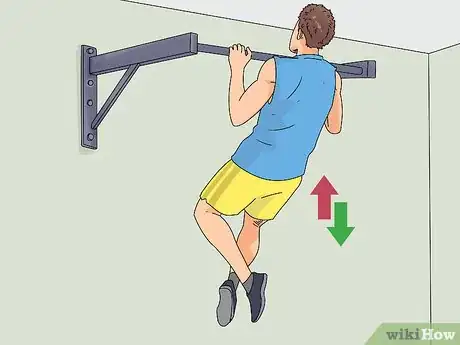

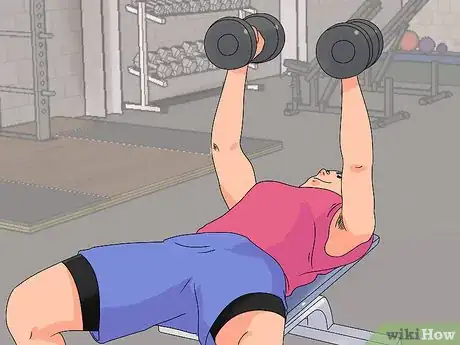
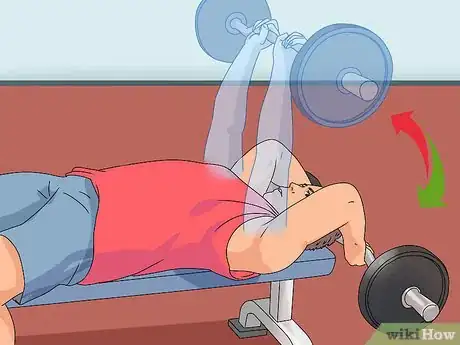

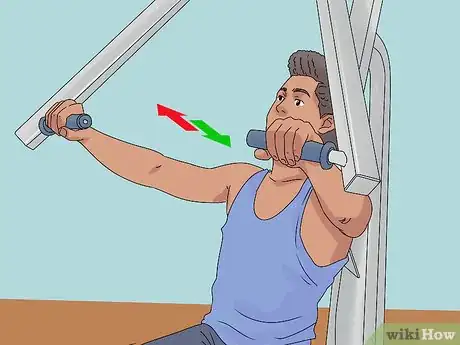


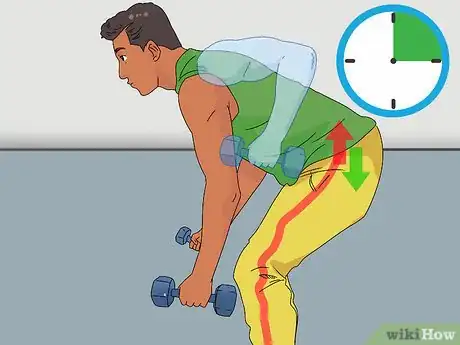
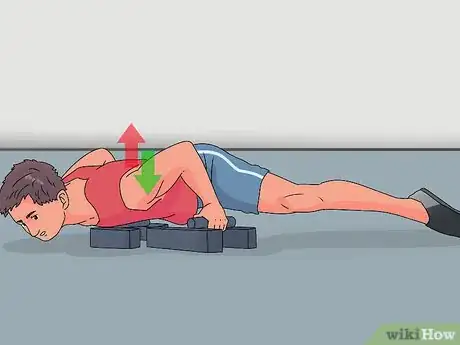
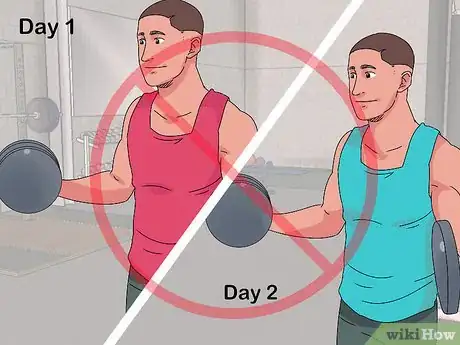


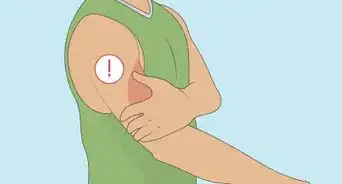
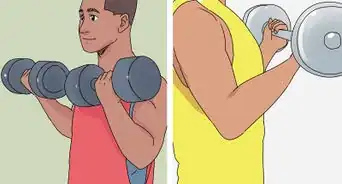
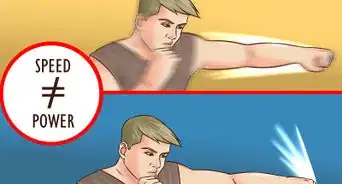

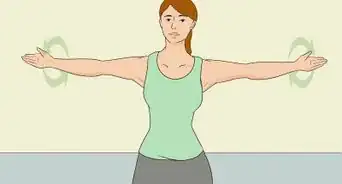
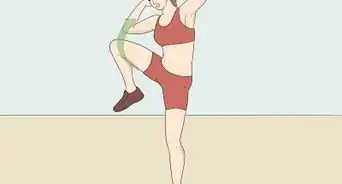
-Step-10-Version-5.webp)










